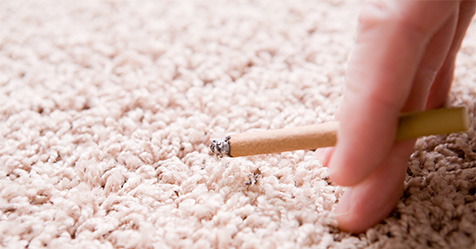The introduction of smarter cleaning equipment carries a whole slew of new responsibilities for building service contractors (BSCs), in-house custodial departments, and facility managers. Proper maintenance, knowledge of basic technology, and new forms of safety and business principles are just some of the ways robotics and autonomous cleaning equipment will reshape the way contractors and facility managers clean and maintain buildings.
However, as organizations adopt more of these technologies into their cleaning and maintenance programs, managers are going to have to adapt their training programs, as well.
Getting Started
Many manufacturers will be the first to tell you that training to operate robotic cleaning equipment is a cinch and won’t require much technical training. These manufacturers have put a lot of brainpower into designing machines that are simple to operate and provide technical support to troubleshoot in real time, too.
Many manufacturers offer on-site training programs in addition to video training packages and manuals that focus on simple operation, maintenance, and how to interact with their own technical departments for troubleshooting. Training does not focus on software programming or any advanced robotics techniques. In essence, many manufacturers have made the training for operating robotic cleaning equipment not much different than training to use regular autoscrubbers.
Paul Behnke, marketing and product manager at the software technology company Brain Corp., recommends training programs that incorporate an explanation of the programming process to help users more quickly identify what works or requires adjustment for each particular robot or usage scenario. “If a robotic system requires programming by a third party, this can be a cumbersome process,” Behnke says. On the other hand, when a custodian or manager can receive simple training on a system, that person is able to review and retrain the system as needed to arrive at an optimal process and solution.
Equipment Maintenance
Many in the training field expect managers will need to provide a robust training program on robotics maintenance to truly get the best return on investment (ROI). “Having automated systems makes training imperative,” says Ben Walker, director at ManageMen, Inc., a consulting firm for the commercial cleaning industry that focuses on training. “Regular maintenance is going to be a lot more important because a person won’t always be behind the machine [to see] what’s going on.”
Establishing a regular maintenance schedule is vital to reducing downtime. It will also help with the training process itself since most people learn best through repetition. Custodians will need to be aware of how often to empty the tanks, how to fill them, and how to dilute the chemicals that go into them.
Additionally, managers should cover the following topics during custodial training:
- Maintenance schedules
- Brush maintenance
- Battery maintenance
- Tracking analytics.
Addressing Safety
Safety is always a top concern in any training program, and in many ways, the adoption of autonomous or robotic equipment can help prevent some common safety hazards like slip-and-fall incidents or hazards associated with cleaning in dangerous environments. This is because personnel can avoid working on slippery surfaces or in dangerous environments when machines can do the cleaning.
However, this does not mean that safety should be ignored while training to run controlled robotic or autonomous technologies. In fact, new safety issues will often arise when introducing robotic equipment, such as avoiding collisions with building occupants. This can be solved with some of the latest technology on the market that uses sensors to detect obstacles. Using equipment during hours when the building—or an area of the building—is empty will also help.
Thomas Boscher, global vice president for marketing technology with Sealed Air Diversey Care and general manager of its Intellibot Robotics team, says any training program should highlight common pitfalls and provide safe ways to avoid getting hurt by the machine. Manufacturers should provide safety videos and they should be part of the regular rotation within a comprehensive training program.
Certification Options
You may also want to consider providing certification for employees who watch safety videos and exhibit appropriate knowledge of equipment use. Standardized certification does not currently exist for the operation or maintenance of robotic or autonomous equipment. However, a standardized, industry-wide certification process for robotics could lead to clearer benchmarks for success, guidelines on how to use analytics for measuring ROI and upkeep of the equipment, and eventually, higher pay for employees who operate and maintain these advanced technologies.
There are advanced, managerial-level certification programs available now that could be valuable to teams using robotics, and focus on big-picture issues like how to set up a cleaning team. “[When you incorporate a robot] into a cleaning team, you have to know you are redesigning your team and you are using the [robot] as a specialist cleaner,” says Mark Warner, senior training specialist for ISSA’s Cleaning Management Institute (CMI). Certification programs like those offered by CMI for supervisors and management cover team setup, and could be valuable to somebody using robotics.
New Standards and Career Paths
Many people view the rise of robotics in the commercial cleaning sector as following a trajectory similar to the automation of heating, ventilation, and air conditioning (HVAC) systems. As new technologies continue to emerge, the cleaning industry as a whole may begin to set up standards that can help robotics work within the industry. Standards will lead to higher efficiency, the proper maintenance and ROI of the expensive machinery, and a re-allocation of labor that will elevate not only the tasks being performed by personnel but also the managerial roles they take on.
“We can start certifying to different levels of expertise like in the HVAC industry,” Walker says. “Having a professional learning path in the [cleaning industry] is going to be very important in the next few years. People are really clamoring for it.”
Some experts are excited about the new career paths that robotics will open up within the field. Warner says, “The ability to manage these machines with one person being able to sit in an office and literally monitor the equipment right from a desktop introduces a degree of management we’ve never been able to have in the field.”
Warner is excited robotics will bring topics like ROI, productivity rates, and quality control into the standard custodial training curriculum. “There was always a need to know those things,” he said. However, increasing competition within the industry and improved efficiencies within robotic technologies will make the environment even more competitive and require custodians to have even higher levels of understanding.
Diverting Savings into Training
The adoption of robotic technologies may result in lowered insurance costs down the road as they help to reduce hazards and the number of employees performing repetitive tasks that lead to injuries and workers’ compensation claims. Diverting some of these savings back into the workforce can have long-term effects on ROI.
Champions of the cleaning profession, such as Roger McFadden, president and chief science officer at McFadden & Associates, LLC, view the redirection of funds as an opportunity to boost morale, elevate the profession, and invest back into the workforce. “I personally think it would be fabulous if business owners found a way to divert cost improvements back into their workforce in the form of education, retention, or in the form of pay,” McFadden says. “That’s where the real work can be done.”
Tips for Tech Training
“Manufacturers of robotic equipment can play a significant role in helping to train and retrain those that use, operate, maintain, or repair their robotic devices,” says Roger McFadden, president and chief science officer at McFadden & Associates, LLC. “It is important that organizations procuring these devices make sure initial training and retraining language be included in the contracts either as a requirement or as an option.”
Custodians who are learning to operate robotic or autonomous equipment should receive the following six tools to ensure optimal success and safety:
- On-site training.Schedule a day or multiple days for your manufacturer or distributor to train your employees in person.
- Appropriate materials.Ensure manufacturers provide extensive manuals with detailed diagnostic information in addition to safety videos.
- Specialized training.Not all training is considered equal. Custodians will need to learn how to clean the machine in addition to learning the autonomous functions.
- Retraining.Software updates to the system may require additional training on the equipment.
- Emergency assistance.Custodians should have access to on-call service personnel should they need immediate troubleshooting assistance.
- Safety compliance and certification.Technology and cleaning equipment can pose safety hazards if not used correctly. Proper training will help to prevent injury and encourage positive cleaning results.



